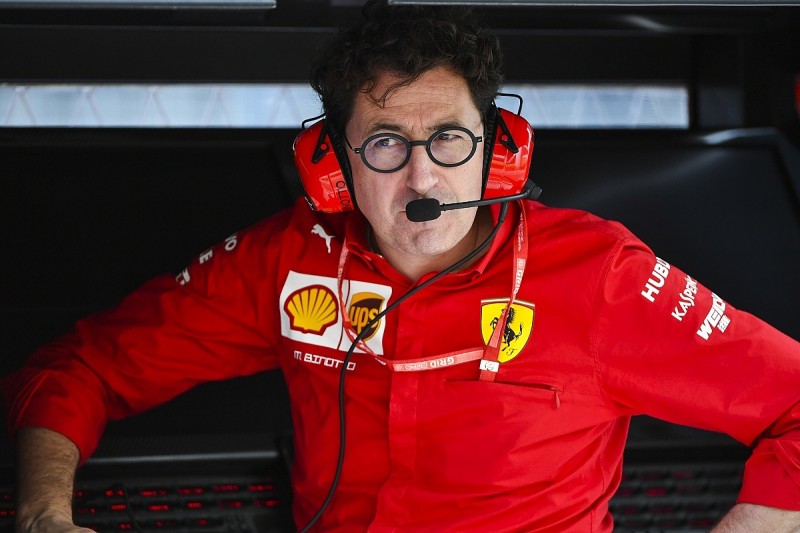Binotto: Costly F1 Russian GP Vettel stop was for safety reasons
Ferrari Formula 1 boss Mattia Binotto says the call for Sebastian Vettel to stop on track after an MGU-K failure, causing a costly virtual safety car, was for safety reasons

Vettel encountered a hybrid problem shortly after making his pitstop, and he obeyed instructions and parked in the runoff area at Turn 15.
The resulting VSC allowed Lewis Hamilton - who had started on medium tyres and not stopped for tyres - to make a quick pitstop, allowing the Mercedes driver to maintain the lead and jump Charles Leclerc in the process.
Leclerc pitted under a full safety car not long after the VSC for soft tyres, but could not retake the second position he had surrendered to Valtteri Bottas, and the Ferrari driver had to settle for third.
"We had a problem on the hybrid side of the power unit," said Binotto. "We had a loss of insulation on the car. And for safety reasons, we could stop immediately.
"It's a shame because maybe 100 metres later we had the pitlane, but it was the safest action we could do for Seb, and obviously safety is first.
"[It was] only for safety. If it would've been for the rest of the car, we would've maybe stopped in a different position.
"But there was really an instruction 'as soon as you can, stop', because of the safety [concerns]."

Asked if such situations usually involved a safety issue for the driver he said: "Normally not.
"But obviously, not being fully aware on what was the damage and the problem, we knew that there was a loss of insulation, and you're right, normally there is no issue for the driver.
"But you're in areas of maybe it's not fully well-known, because you don't know exactly what's the issue. For us it was safety."
- How Ferrari's race fell apart
- The convincing win that got away
- Binotto explains Ferrari strategy
- Tension between drivers?
- The Mercedes miracle
Binotto believes that, despite the control electronics being damaged, Vettel will not face a grid penalty in Japan, as he still has one in the pool from earlier in the season.
FIA race director Michael Masi said that a VSC was inevitable, given that the marshals had to deal with a hybrid issue.
"[It was] because the car was unsafe from an electrical point of view, and it stayed unsafe for the rest of the race," said Masi.
"To recover it in the safest possible manner, and put marshals out there to do so, it was a very simple decision to put out the VSC.
"Moving it back into that hole, because of the electrical issue, we made sure it was well and truly clear and in a safe position before going forward.
"From our end, you've just got to be far more cautious.
"Putting people trackside in that area, there's a reason there's a whole lot of Tecpro [barrier] there. It's because people can go off. [there] wasn't even a second thought."
Masi praised Vettel for stopping where he did.
"Sebastian did a fantastic job pulling it up as close to the vehicle opening as he did," he said.
"Even the fact he virtually turned it around to make it as easy as possible to get back into the hole, he can only do so much.
"In the circumstances, I think Sebastian did absolutely the best job he possibly could."
Be part of the Autosport community
Join the conversationShare Or Save This Story
Subscribe and access Autosport.com with your ad-blocker.
From Formula 1 to MotoGP we report straight from the paddock because we love our sport, just like you. In order to keep delivering our expert journalism, our website uses advertising. Still, we want to give you the opportunity to enjoy an ad-free and tracker-free website and to continue using your adblocker.



















Top Comments